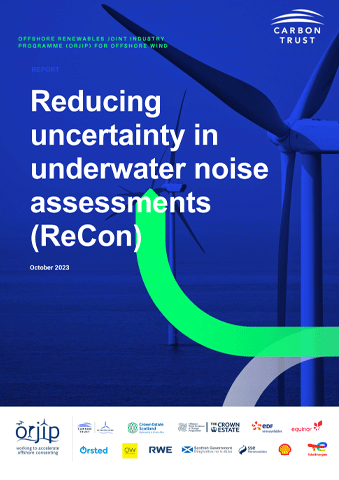Underwater noise assessments are a key component of offshore wind consenting. This report provides an analysis of installation noise recordings across 11 offshore wind farms to determine the significant influencing parameters on impact pile-driving noise.
For a subset of wind farms, the report contains further analysis comparing the noise recordings and pre-construction modelling. Recommendations are made to reduce modelling uncertainty in offshore wind noise risk assessments going forward.
Key findings
The following parameters should be included in piling noise assessments to improve the accuracy of predictions:
o Blow energy, pile diameter, water depth.
o Stick-up length for pin piles and penetration depth for monopiles.
o Soil conditions via penetration depth.
To model the impact range on baleen whales and porpoises, robust estimates of the following variables are required:
o Number of blows, blow energy, and the blow frequency spectrum.
o Soft-start duration, estimate of sounds levels.
o The fleeing speed of the animal.
- Noise risk assessments and monitoring need to be standardised to facilitate cross-project comparisons and continuous improvement of noise risk assessments– guidelines are included in the report.
Uncertainty remains in noise estimates, and further research is needed on:
o The impact of substrate type/pile refusal
o Soft start noise levels


